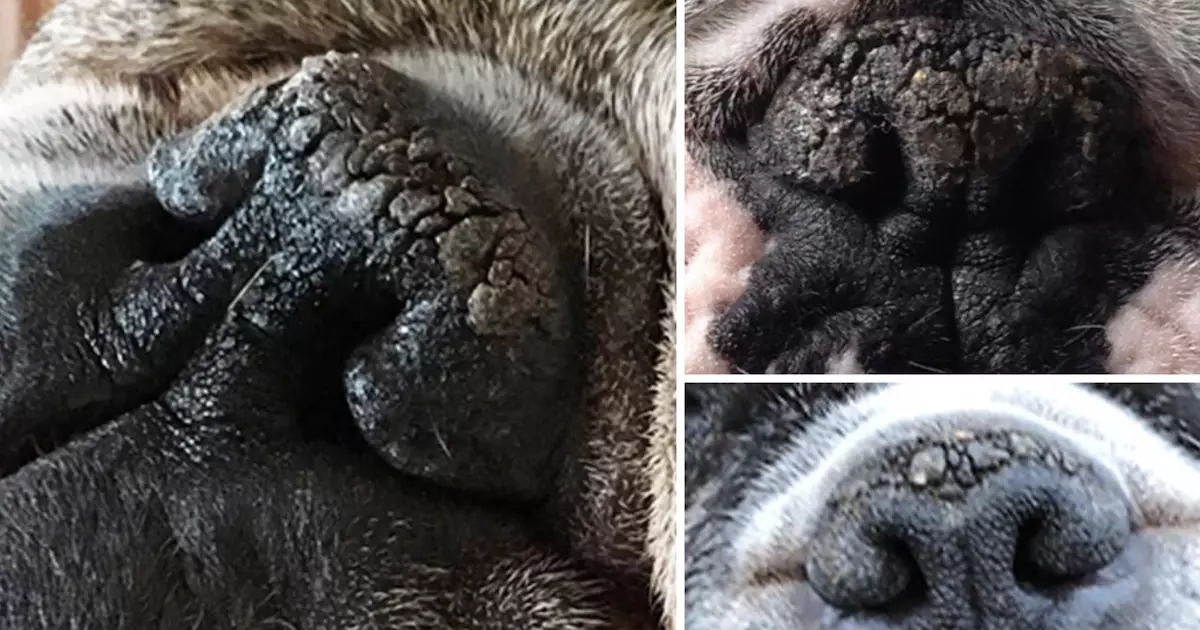While many pet owners may notice their dog’s nose becoming occasionally dry, a condition known as nasal hyperkeratosis takes this dryness to a different level. Characterized by excessive keratin buildup, this phenomenon leads to a crusty, hard surface on dogs’ noses. Surprisingly, the cause remains largely unknown and undefined, making nasal hyperkeratosis an idiopathic condition. Although it might not pose a direct threat to your dog’s health, it’s essential to recognize how uncomfortable and irritating this condition can be for our furry friends.
Canines are inherently reliant on their highly sensitive noses to interact with the environment; the moist surfaces help in capturing scent molecules, crucial for their connection to the world around them. Thus, while it may appear aesthetic, addressing nasal health can significantly impact your dog’s quality of life.
Identifying Breeds at Risk
Certain breeds appear to be more susceptible to nasal hyperkeratosis, leading to the need for increased vigilance among owners of these dogs. Breeds with distinct physical traits, particularly flat-faced dogs such as Bulldogs, Pugs, and Boxers, often face elevated risks due to their compromised facial structure, which might interfere with normal nasal function. Similarly, both excessively small and large breeds may exhibit tendencies toward dehydration, potentially weakening their immune systems and exacerbating conditions like nasal hyperkeratosis.
Notably, breeds characterized by heavy bones or bodies often show signs of nasal dryness. Understanding these predispositions can be the first step in managing nasal hyperkeratosis in your dog.
Effective Solutions: Soothe Your Dog’s Nose
Fortunately, relief exists for those crusty snouts. A multitude of specialized products available for purchase can help address the discomfort related to nasal hyperkeratosis. One worthy champion is Natural Dog Company’s Snout Soother, a balm designed meticulously to cater to dry dog noses. This product incorporates a blend of nourishing oils and butters like Shea butter and coconut oil, each ingredient purposefully layered to offer immediate and long-term relief.
The beauty of this approach lies in its multi-layer absorption; starting with lighter oils, the treatment provides quick soothing effects, while medium and heavy-weight ingredients tackle dryness more profoundly. This thoughtful layering technique not only soothes but also restores your dog’s natural comfort.
Application and Maintenance: Keeping Up with Your Dog’s Needs
Applying the chosen nose balm is a simple yet vital process. Most veterinarians recommend applying the product two to three times a day over a span of a few days. After three days, keep a close eye on your dog’s nose; a change in texture may indicate positive progress. If you observe the crust beginning to crumble, transitioning to a maintenance routine is prudent. This typically involves fewer applications per week, adjusting this frequency based on the severity of the condition and your dog’s overall health.
Maintaining an effective moisture routine can dramatically enhance your dog’s sniffing experience, ensuring the joy of exploration continues without the distraction of discomfort from nasal hyperkeratosis. Remember, the welfare of our furry companions hinges not just on feeding and exercise but also on attentively addressing their unique health needs.


Leave a Reply